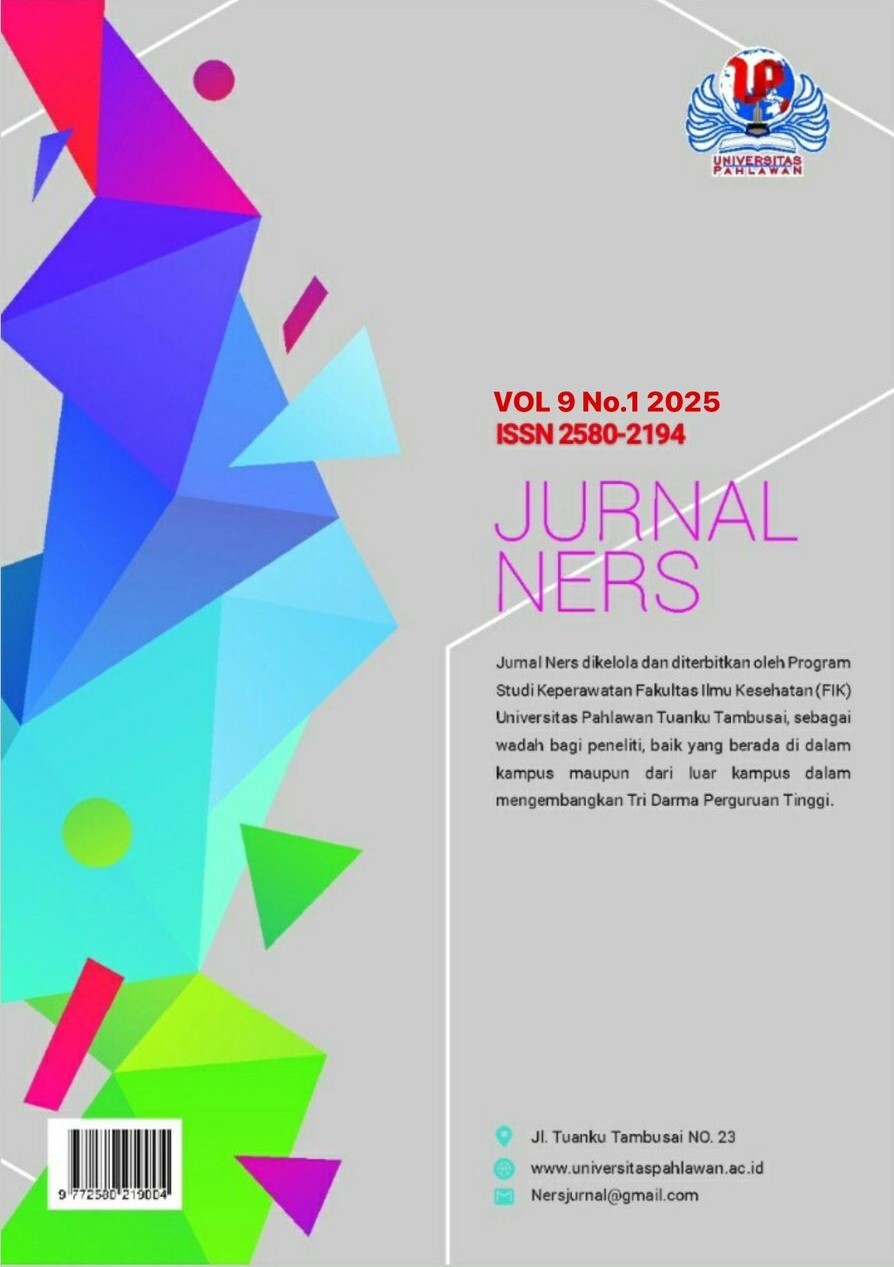Perbandingan Pemberian Obat Domperidon dan Daun Katuk Terhadap Peningkatan Produksi ASI Pada Ibu Nifas di PMB Bd. Reny Tahun 2024
DOI:
https://doi.org/10.31004/jn.v9i1.32331Abstract
Upaya untuk memperlancar produksi ASI biasanya menggunakan pengobatan secara farmakologi atau non-farmakologi. Pengobatan farmakologi pada produksi ASI harus sesuai anjuran karena adanya efek samping antara lain, diare, lelah, letih, rasa ngantuk, mulut kering dan sakit kepala. Pengobatan non-farmakologi terdiri dari pijat oksitoin, perawatan payudara, dan salah satu yang dapat dilakukan untuk memperlancar produksi ASI pada ibu nifas adalah dengan mengkonsumsi rebusan dan ekstrak daun katuk. Jenis penelitian ini adalah kuantitatif dengan desain Quasi-experiment yang rancangannya menggunakan Non Equivalent Control Group Design, karena penelitian ini bertujuan untuk membandingkan hasil pre test kelompok intervensi dan kelompok kontrol. Populasi dalam penelitian ini adalah seluruh ibu nifas yang bersalin di PMB Bd.Reny. Pengambilan sampel menggunakan teknik sampling Non Probability dengan metode Total Sampel. Metode Total Sampeling merupakan Teknik pengambilan sampel Dimana jumlah sampel sama dengan populasi. Hasil analisis uji Wilcoxon yaitu didapatkan nilai signifikansi 0.00 (p<0,05) untuk domperindone dan daun katuk, dapat disimpulkan “terdapat perbedaan secara signifikan, pengaruh domperindone dan daun katuk terhadap kelancaran ASI ”. Kata Kunci : Domperindone, Daun Katuk, Kelancaran ASI Abstract Efforts to speed up breast milk production usually use pharmacological or non-pharmacological treatment. Pharmacological treatment for breast milk production must be as recommended because side effects include diarrhea, tiredness, tiredness, drowsiness, dry mouth and headaches. Non-pharmacological treatment consists of oxytoin massage, breast care, and one thing that can be done to facilitate breast milk production in postpartum mothers is by consuming katuk leaf decoction and extract. This type of research is quantitative with a Quasi-experiment design whose design uses a Non-Equivalent Control Group Design, because this research aims to compare the pre-test results of the intervention group and the control group. The population in this study were all postpartum mothers who gave birth at PMB Bd. Reny. Sampling used a Non Probability sampling technique with the Total Sample method. The Total Sampling Method is a sampling technique where the sample size is the same as the population. The results of the Wilcoxon test analysis obtained a significance value of 0.00 (p<0.05) for domperindone and katuk leaves, it can be concluded "there is a significant difference in the effect of domperindone and katuk leaves on the smooth flow of breast milk". Keywords: Domperindone, Katuk leaves, smooth breastfeedingDownloads
Published
2024-11-20
How to Cite
Rohayati, S. ., & Faulina, R. . (2024). Perbandingan Pemberian Obat Domperidon dan Daun Katuk Terhadap Peningkatan Produksi ASI Pada Ibu Nifas di PMB Bd. Reny Tahun 2024. Jurnal Ners, 9(1), 942–948. https://doi.org/10.31004/jn.v9i1.32331
Issue
Section
Articles
License
Copyright (c) 2024 Jurnal Ners

This work is licensed under a Creative Commons Attribution-ShareAlike 4.0 International License.
Authors who publish with this journal agree to the following terms: Authors retain copyright and grant the journal right of first publication with the work simultaneously licensed under a Creative Commons Attribution-ShareAlike 4.0 International License that allows others to share the work with an acknowledgement of the works authorship and initial publication in this journal. Authors are able to enter into separate, additional contractual arrangements for the non-exclusive distribution of the journals published version of the work (e.g., post it to an institutional repository or publish it in a book), with an acknowledgement of its initial publication in this journal. Authors are permitted and encouraged to post their work online (e.g., in institutional repositories or on their website) prior to and during the submission process, as it can lead to productive exchanges, as well as earlier and greater citation of published work (See The Effect of Open Access).







